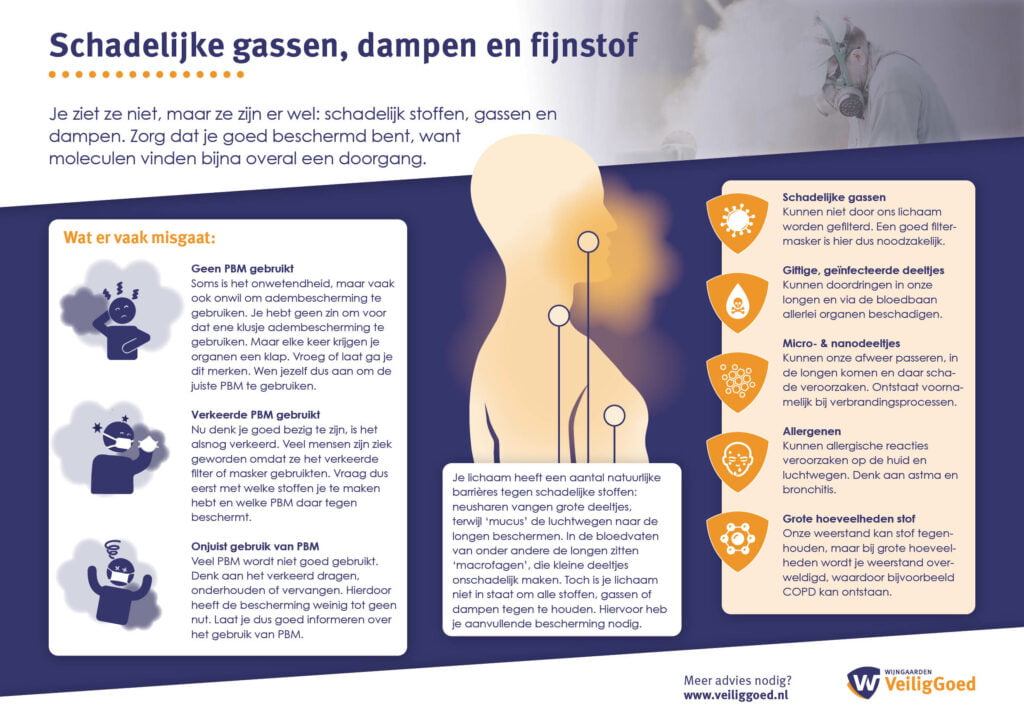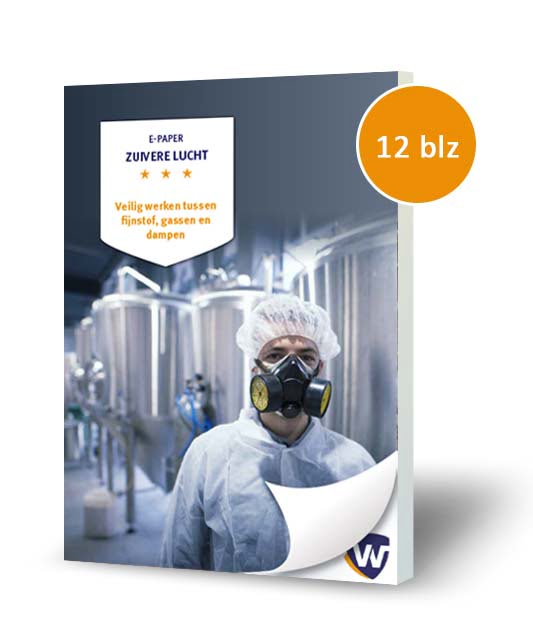
Free poster
Working safely with fine dust, gas and vapours
At which mail address would you like to receive the E-paper?
"*" indicates required fields
One in five employees will be exposed to hazardous substances in the workplace. Breathing in hazardous substances, vapours and fumes is one of the most underestimated occupational risks. The surrounding air could be polluted by all kinds of particles, or by a combination of particles.
The surrounding air could be polluted with:
Inhaling is usually done unconsciously and the consequences become noticeable in the long term, expressing as lung disease or cancer. Sometimes, exposure is immediately noticeable in the form of irritation, vomiting, intoxication, suffocation and poisoning.
Substances and vapours mainly have impact on the airways, but also other organs, like the skin and eyes could be damaged. The latter may also occur unconsciously, due to eating, drinking or smoking with dirty hands.
In addition to the primary steps in the AH-strategy, PPE usually remains required. Relevant products that we can provide, are:

Proper protection doesn’t do the trick yet. Safety stands or falls with proper use. Therefore, you should ensure a good instruction and sufficient support for personal protection.
First, one must make employees aware of the risks. Many effects are actually invisible and also not always known. This is what asbestos and quartz dust taught us. If this happens, employees will not only start using PPE, but also, for instance, keep their hands clean to prevent contamination or pollution.
Involve the employees in the improvement of health and safety. For larger projects or larger quantities, you can assemble a work group. All tips provided by the work group can contribute to significant improvement of safety!

Which role can a PPE-consultant fulfil here?
Our advisors are happy to help you or make an appointment if you wish.
Phone: +31 184 434 455
Mail: info@veiliggoed.nl
By use of our scan, we inventory risks at function level. By means of an advisory report and a PPE-matrix, you will get an overview of the required protection measures. More information about the PPE-scan.
Trapezium 400
3364 DL Sliedrecht

"*" indicates required fields

"*" indicates required fields